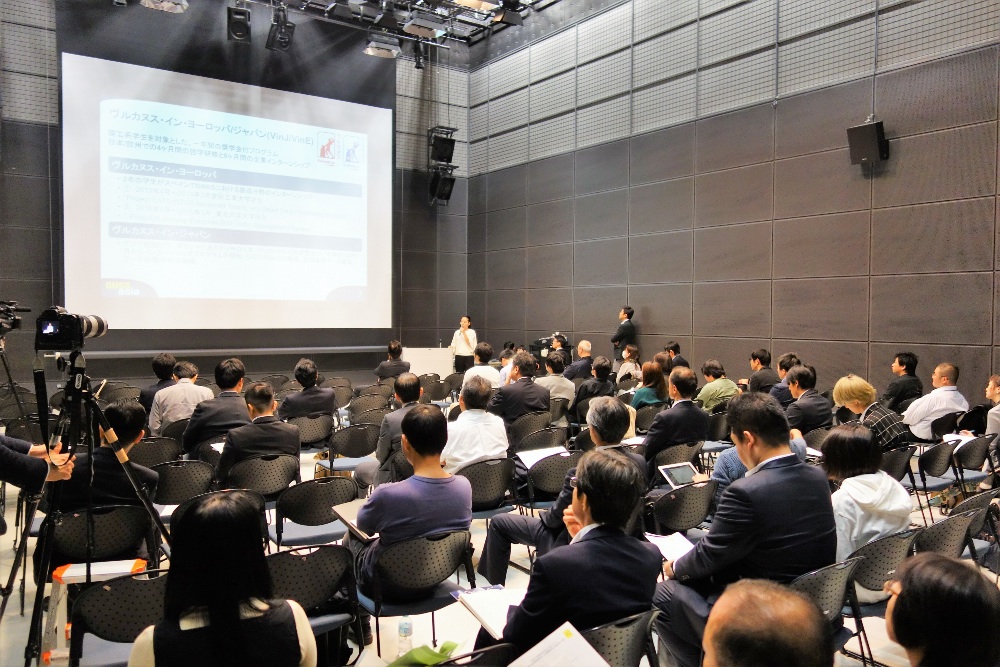 G-EXPO Symposium
G-EXPO Symposium
From October 12th to 14th, G-EXPO was held at the National Museum of Emerging Science and Innovation (Miraikan). As part of the event, on October 13th from 13:00-17:15 at Innovation Hall, G-SPASE Symposium “Social Innovation through Space and Geospatial Technology -To the Infinity and Beyond: The Future of Human Resource Development Program Designed to Solve Social Issues using Space Applications-” was held. The program consisted of introduction of the G-SPASE program, 3 invited lectures, 5-minutes student research presentations, poster session and panel discussions. The symposium attracted 52 people in total.
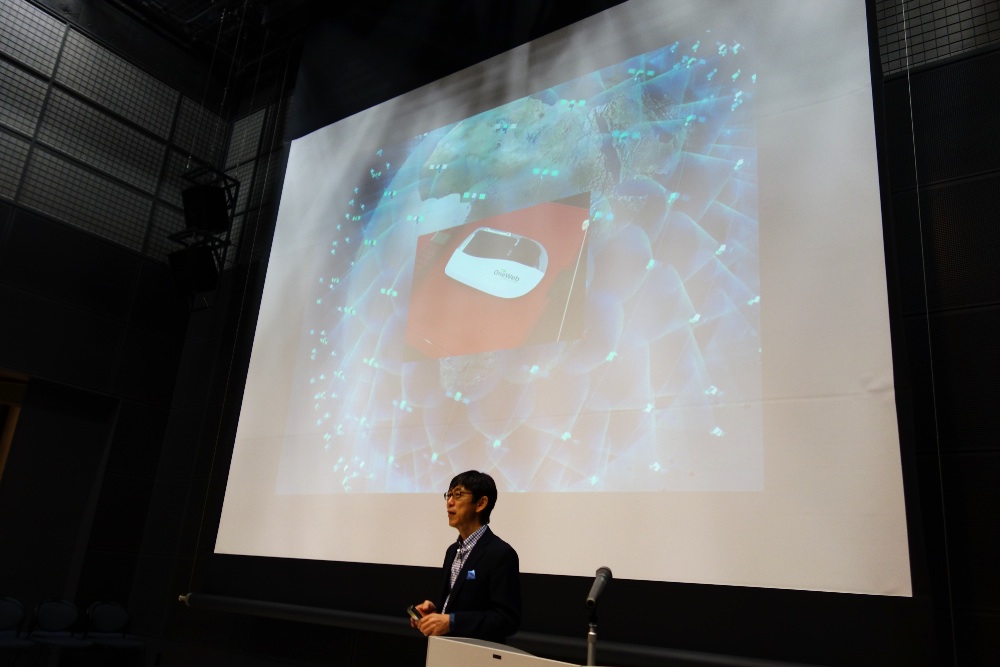
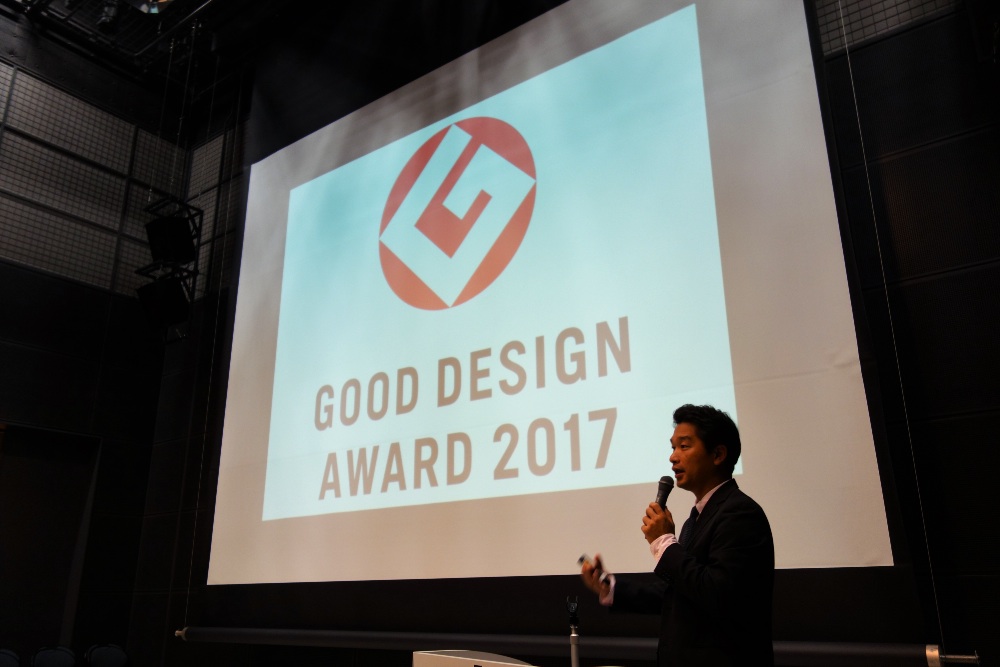 Professor Ryosuke Shibasaki, The University of TokyoAssistant Professor Naohiko Kohtake, Keio University
Professor Ryosuke Shibasaki, The University of TokyoAssistant Professor Naohiko Kohtake, Keio University
First, we had Yoko Kadoya from gnss.asia speak on “EU-Japan Cooperation in GNSS and Introduction of Human Resources Training Programme.” There were voices from the audience that they weren’t familiar with such organization like gnss.asia and their scholarship program open to foreigners.
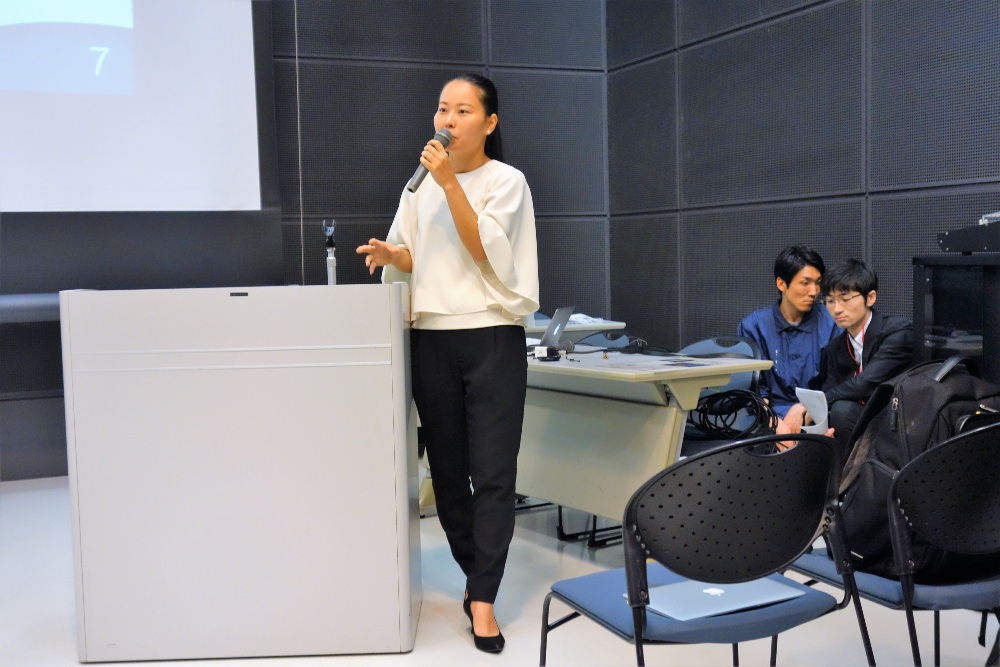 Yoko Kadoya, gnss.asia
Yoko Kadoya, gnss.asia
Second, Fabien Roudier from Institute for a Global Society delivered the talk “People Analytics: Screening Human Intelligence with A.I.” He explained the current recruitment situation using A.I., competency evaluation via the GROW application and its usage of the results, drawing real world case studies from acutual industries.
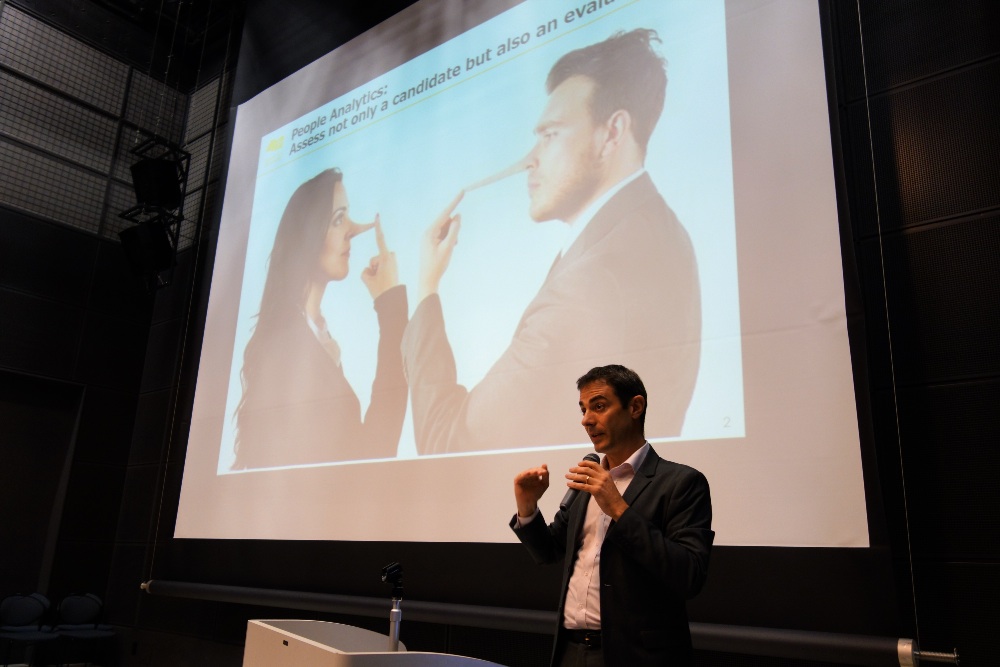 Fabien Roudier, IGS
Fabien Roudier, IGS
Third, Professor Taichi Furuhashi from Aoyama Gakuin University gave out a lecture “State of the DRONEBIRD.” He introduced the usage of drones in disaster mapping projects. The audience was excited to hear about disaster prevention agreement with the local districts in Japan. His goal is to increase the number of people that thinks and acts like Tadataka Ino who created the map of Japan.
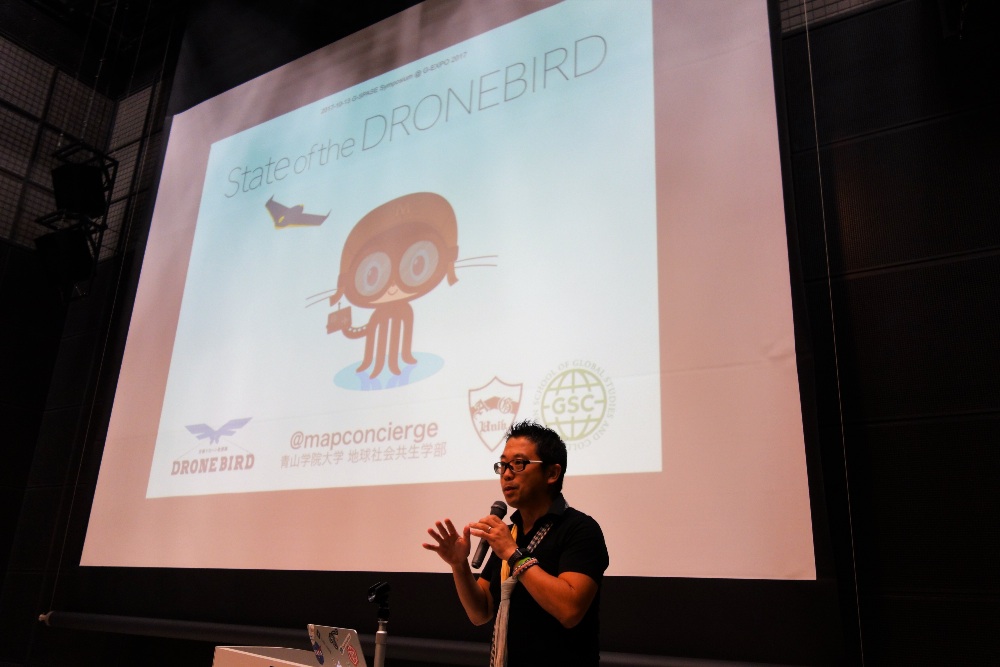 Professor Taichi Furuhashi, Aoyamagakuin University
Professor Taichi Furuhashi, Aoyamagakuin University
After the break, Assistant Professor Akihiko Nishino from Keio University, proudly presented the collaboration project between the University of Tokyo/ Keio University & Shibuya Junior and Senior High School. From April to June, researchers and high school students worked on a joint project in solving social issues using space and geospatial technologies in the Shibuya ward area. This kind of activity was designed for the purpose of increasing teaching skills as well as deepening knowledge of one’s expertise by teaching peers. The project itself was covered closely by Yomiuri Network and the detail was published in a newspaper article. High school students strived to answer the following questions making great use of space and geospatial technologies.
1) “How can family with children enjoy Shibuya?
2) “How can we get rid of garbage on Takeshita Street?”
3) “How can foreign tourists find a way through the Shibuya station maze?”
4) “How can we quantify the amount of water for domestic use in case of disaster?”
5) “How can tourists find a suitable sushi bar?”
Next, in the symposium, we had 6 students make a 5-minutes presentation on the following themes.
1) “Taxi Probe Data Analysis for Business Catchment”
2) “High-Precision Automatic Mower”
3) “Using Machine Learning and GIS for Agriculture Microfinance”
4) “Method of Evacuation Optimization using 3D-Model”
5) “Asian Base Station 2017”
6) “UAV Mapping with Low Cost RTK-GNSS Receiver”
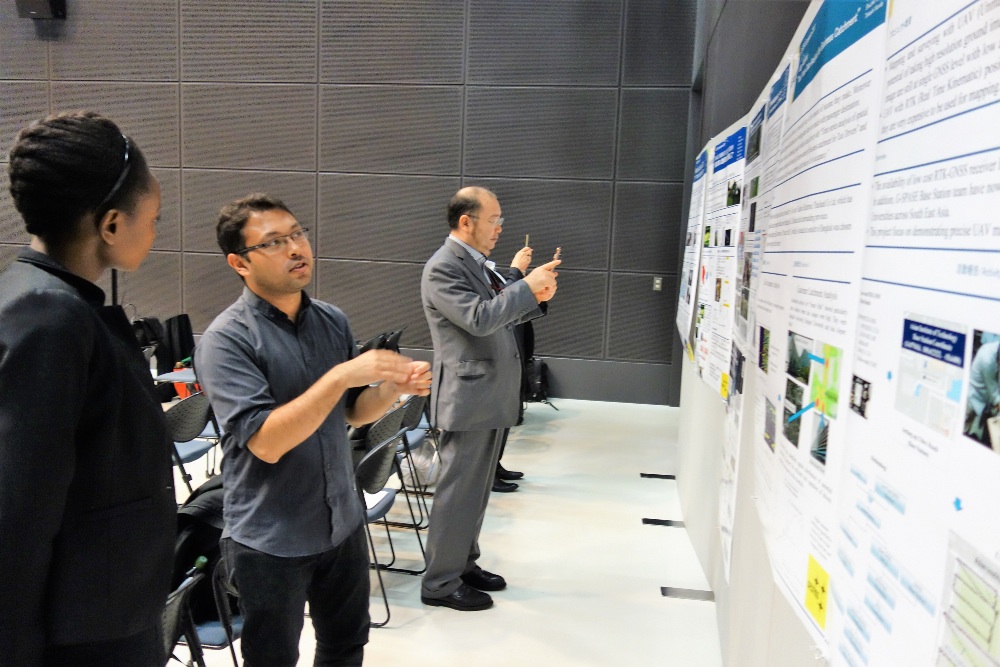
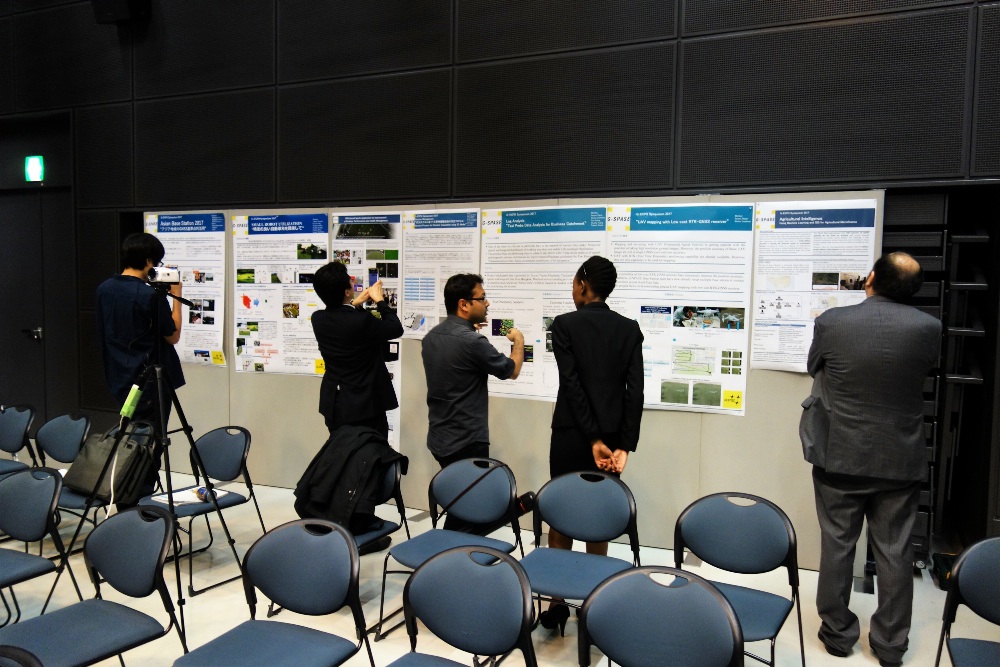 Poster Session 1Poster Session 2
Poster Session 1Poster Session 2
In the panel discussion, including studying abroad students from Zambia and Nepal, we had participants answer to such questions, “What was the motivation in joining G-SPASE?”, “What was the advantage?”, “What was the weak point?”, “What do you see in the future?” The panelists shared opinions such as difficulties in balancing G-SPASE’s project with their master’s/Ph.D’s research, suggestion of different guidance towards masters and Ph.D students, optimized length of the program to stay motivated and inclusion of more students with working experience.
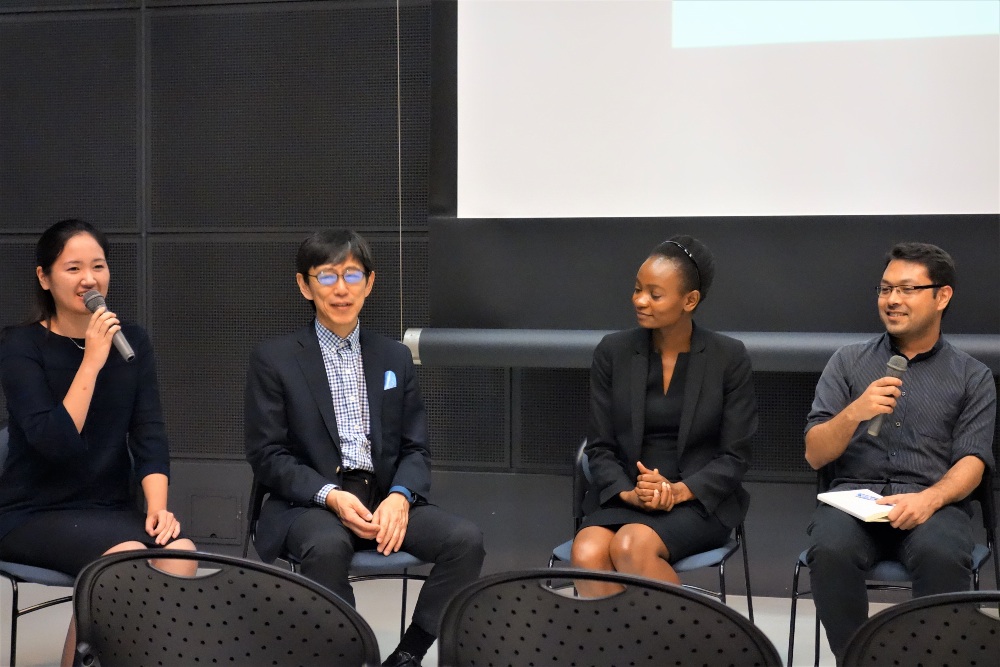 Panel Discussion
Panel Discussion
The goal of G-SPASE is to educate personnel who can communicate and realize projects in the international environment. This fiscal year is the final year of the G-SPASE program which has been carried out for 6 consecutive years. As a fruitful outcome, the program was awarded the GOOD DESIGN AWARD 2017 on October 4th. From November 1st to 5th at Tokyo Midtown, an exhibition will be held. Also, the final symposium is under way in February at North Hall, Keio University. We are looking forward to reporting our final project outcome.
This symposium is also introduced in the Cabinet Office, Government of Japan website.
http://qzss.go.jp/news/archive/gspase_171102.html (only available in Japanese)
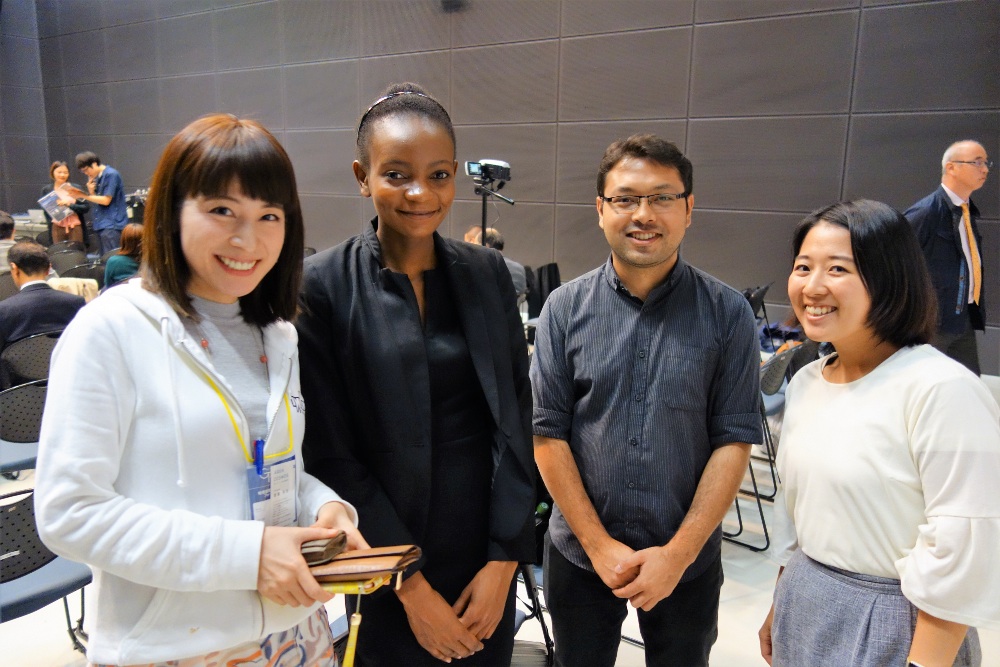 G-SPASE Students
G-SPASE Students